MaryAnn Bernal's Blog, page 179
May 3, 2015
History Trivia - Gregory V consecrated as pope
May 3

996 Gregory V was consecrated as pope. The pontificate of Gregory was brief and turbulent, and was interrupted by the installation of John XVI as antipope.
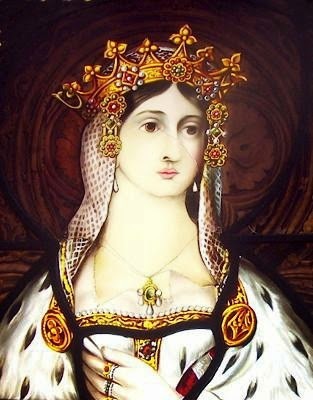
1415 Cecily Neville, mother of Edward IV of England and Richard III of England was born.

1469 Niccolo Machiavelli was born.

996 Gregory V was consecrated as pope. The pontificate of Gregory was brief and turbulent, and was interrupted by the installation of John XVI as antipope.

1415 Cecily Neville, mother of Edward IV of England and Richard III of England was born.

1469 Niccolo Machiavelli was born.
Published on May 03, 2015 02:00
May 2, 2015
History Trivia - Anne Boleyn, Queen of England, arrested
May 2

1519 Leonardo da Vinci died.
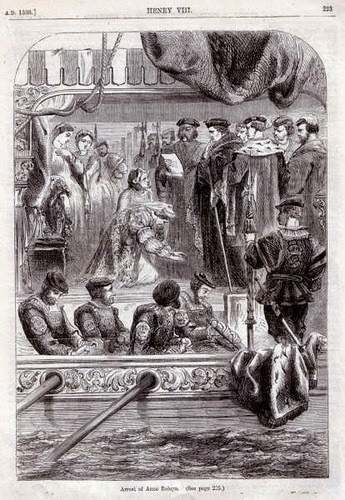
1536 Anne Boleyn, Queen of England, was arrested and imprisoned on charges of adultery, incest, treason and witchcraft.
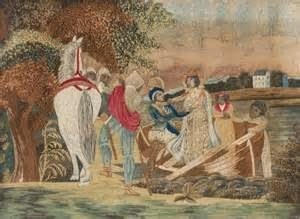
1568 Mary, Queen of Scots, escaped from Loch Leven Castle.

1519 Leonardo da Vinci died.

1536 Anne Boleyn, Queen of England, was arrested and imprisoned on charges of adultery, incest, treason and witchcraft.

1568 Mary, Queen of Scots, escaped from Loch Leven Castle.
Published on May 02, 2015 02:00
May 1, 2015
Two Ancient High Official Father and Son Tombs Opened at Pyramids Area in Egypt
 Ancient Origins
Ancient OriginsTwo important tombs of Egyptian high officials found in the Pyramids Archaeological Area of Egypt have been opened for the first time since 2007, revealing beautiful artwork and scenes depicting ancient craftsmen.
The tombs had been discovered in 1925, but were closed in 2007 due to political upheaval in Egypt. They were reopened this week in the western cemetery of Giza by Minister of Antiquities Mamdouh Al-Damatty, reports Daily News Egypt.
Waad Allah Abul Ela, head of the Projects Department at the Antiquities Ministry told The Cairo Post, “The first tomb belonged to Emery, a high priest and administrative overseer of the royal court during the reign of Pharaoh Khufu (2589 B.C.-2566 B.C.) while the second belonged to Nefer bau Ptah, Emery’s eldest son who was an overseer of the royal estates and a superintendent of the royal palace during the 5th Dynasty (2494 B.C.-2345 B.C.)”
Both of the tombs were constructed in Old Kingdom form. The tomb architecture and the art within depicts ritual life at that time.
MORE
Egyptologists Unearth Tomb of Long Lost Pharaoh so Ancient Only His Name is Known Together for two millennia: Iron Age burial containing father and son weavers unearthed in Scotland River of Mercury in Underworld of Pyramid of the Sun may lead to Royal Tomb

The standing statue of Emery. Credit: Ministry of Antiques Nefer Ptah’s tomb is made up of five rooms and a crypt. It covers “an area of approximately 144 m² and reaches a height of 4.6 m,” according to the Ministry of Antiques Press Office. A life-size rock statue is carved into a wall within the first hall.
Emery’s tomb was built with limestone blocks and contains vivid and colorful scenes of sculptors, carpenters and goldsmiths. The images represent the everyday life and practices of Emery and his family.
MORE
Archeologists discover Mythical Tomb of Osiris, God of the Dead, in Egypt The Monumental Tomb of Queen Tin Hinan, Ancient Ancestress of the Tuaregs Ancient Egyptian mummies found floating in sewage water in Egypt Restoration works have been performed over four years by the Ministry of Antiquities’ Projects Sector, including: the reinforcement of walls; the installation of lighting and ventilation systems; the addition of new ceilings and roofs; and the laying of new wooden floors. Graffiti was removed from the walls, and original faded paintings were restored and strengthened.

The two tombs were discovered in 1925 and are now being reopened to visitors. Credit: Ministry of Antiques Certainly there is no lack of mysterious and amazing tombs to be highlighted in Egypt, and this reopening has been done with the hope of focusing attention on the many interesting sights (and sites) in Egypt that are less frequented by tourists.
Recently, researchers have been investigating the tomb of a long lost Pharaoh so ancient only his name is known, unearthing a massive grave in the West Bank of the Nile Valley of the Kings containing more than 50 royal Egyptians, and discovering an enormous ancient reproduction of the mythical Tomb of Osiris as described by Egyptian legend, complete with multiple shafts and chambers.
Minister Al-Damatty says the plan is to “develop the Pyramids Area as a whole” in order to attract local and international tourists. With such exciting discoveries revealing the rich history of Egypt, this may encourage visitors to make the trip to experience it themselves.
Featured Image: A striking relief showing daily activities in the tomb of Nefer Ptah. Credit: Ministry of Antiques
Published on May 01, 2015 07:09
History Trivia - Edward Bruce crowned King of Ireland
May 1

Festival of Juno occurred on this day.
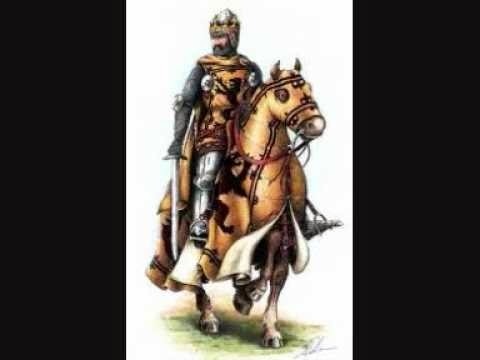
1316 Edward Bruce was crowned King of Ireland.
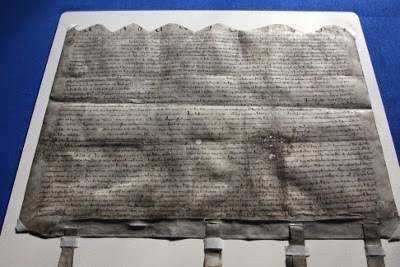
1328 Wars of Scottish Independence end: Treaty of Edinburgh-Northampton - the Kingdom of England recognized the Kingdom of Scotland as an independent state.

Festival of Juno occurred on this day.

1316 Edward Bruce was crowned King of Ireland.

1328 Wars of Scottish Independence end: Treaty of Edinburgh-Northampton - the Kingdom of England recognized the Kingdom of Scotland as an independent state.
Published on May 01, 2015 02:00
April 30, 2015
History Trivia - Edmund de la Pole, Yorkist pretender to the English throne, executed
April 30

313 Roman emperor Licinius unified the entire Eastern Roman Empire under his rule.

1513 Edmund de la Pole, Yorkist pretender to the English throne, was executed on the orders of Henry VIII.
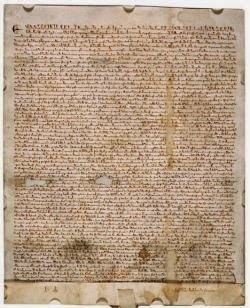
1527 Henry VIII of England and King Francis of France signed the treaty of Westminster.

313 Roman emperor Licinius unified the entire Eastern Roman Empire under his rule.

1513 Edmund de la Pole, Yorkist pretender to the English throne, was executed on the orders of Henry VIII.

1527 Henry VIII of England and King Francis of France signed the treaty of Westminster.
Published on April 30, 2015 02:00
April 29, 2015
History Trivia - French victory over English at Orleans
April 29,
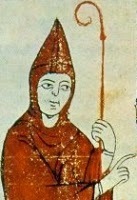
1109 Hugh of Cluny died. Hugh was the driving force in bringing the monastery of Cluny to preeminence in medieval France.

1347 Catherine of Siena was born. Catherine, the patron saint of Italy, played a significant role in returning the Papacy from Avignon to Rome. She was declared a Doctor of the Church in 1970.
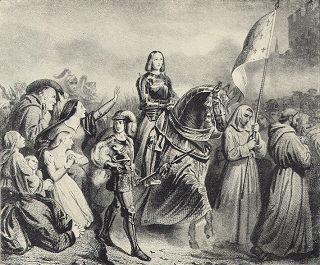
1429 Joan of Arc led French forces to victory over English at Orleans.

1109 Hugh of Cluny died. Hugh was the driving force in bringing the monastery of Cluny to preeminence in medieval France.

1347 Catherine of Siena was born. Catherine, the patron saint of Italy, played a significant role in returning the Papacy from Avignon to Rome. She was declared a Doctor of the Church in 1970.

1429 Joan of Arc led French forces to victory over English at Orleans.
Published on April 29, 2015 01:30
April 28, 2015
Human bones in pot may reflect gruesome ritual conducted by army of Queen Boudicca
 Ancient Origins
Ancient OriginsA 2,000-year-old cooking pot filled with cremated human bones has been found by the banks of the Walbrook river in London, in what was known in ancient times as Londinium, a thriving capital of a Roman province nearly two millennia ago. The finding was made near an earlier discovery of dozens of human skulls, adding to the evidence that they are the remnants of a rebellion led by famous Celtic Queen Boudicca, who united a number of British tribes in revolt against the occupying forces of the Roman Empire in 60-61 AD.
The cooking pot was unearthed during excavations to create a new 13 mile underground railway line through London, known as the Crossrail Project, which has already yielded thousands of artifacts and human remains, including a 9,000-year-old tool making factory, prehistoric mammoth bones, a Roman road, medieval ice skates, an 800-year-old piece of a ship, and the skeletal remains of plague victims and thousands of people that had been buried in the medieval cemetery of the infamous Bedlam psychiatric hospital.

Workers uncover the skeleton of a Londoner from centuries ago in Bedlam burial ground underneath Liverpool Street. ( Crossrail.co.uk photo )The cooking pot packed full of bones was found next to an archaeological site where researchers had previously dug up 40 human skulls and 2 horse skulls (but not the rest of their bodies) that date back to the same time period.
“It had been suggested that the skulls ended up in the river – which vanished into culverts centuries ago – by accident, eroded out of a Roman cemetery and washed downstream until they came to rest at bends in the bank,” The Guardian reports. “The new finds suggest a grimmer explanation.”

Representational image: Pot filled with cremated human bones recently found in another part of England ( Hampshire Archaeology )“We now wonder again if the skulls were deliberately placed on the banks. Certainly no river ever carried off the cooking pot with its cremated bones which was unquestionably deliberately placed here,” said Jay Carver, Crossrail’s lead archaeologist. “And the horse skull we found with one of the skulls didn’t come out of some equine graveyard, that was clearly also placed there”.
Previous analysis of the skulls revealed that they bore marks of trauma from blunt force or edged weapons, indicating smashed or slashed faces, fractures of the eye and cheekbones, and blows to the back of the head.
The archaeologists suggest that, taken together, the evidence points to the skulls being the heads of executed criminals and rebels, or Romans slaughtered during Boudicca’s rebellion.
Boudicca, sometimes written Boadicea, was queen of the Iceni tribe, a Celtic clan which united a number of British tribes in revolt against the occupying forces of the Roman Empire, following the pillaging of her lands, enslavement of her people, and rape of her daughters at the hands of the Romans.
Boudicca, the Celtic Queen that unleashed fury on the Romans – Part 1 Boudicca, the Celtic Queen that unleashed fury on the Romans – Part 2

Artist’s depiction of Queen Boudicca. Image source .
Historical records suggest that Boudicca succeeded in gathering an army of up to 100,000 warriors. Her first target was Camulodunum (now modern-day Colchester), a town for discharged Roman soldiers and the site of a temple to the former Roman Emperor Claudius. The Iceni and their allies descended upon the town, and razed it to the ground.
Upon hearing the news of the revolt, the Roman Governor Gaius Suetonius Paulinus hurried to Londinium, the site of the latest grisly discovery. But the Romans, having concluded that they did not have the numbers to defend the settlement, evacuated and abandoned the town. Boudicca’s warriors burned and destroyed the entire settlement, killing anyone that had not been sensible enough to leave. There were no survivors.
Boudicca’s third and final annihilation was at Verulamium (now known as St Albans), which again was razed to the ground and completely destroyed. By the end of the final attack, an estimated 70,000 – 80,000 had been killed. The crisis caused the Emperor Nero to consider withdrawing all Roman forces from Britain.
Boudicca believed her destruction of three key city’s would free Britain of the Roman’s, but she was sadly mistaken. The Romans regrouped and eventually defeated Boudicca and her army in a final battle in the West Midlands of England. The final result was that the Romans strengthened their military presence in Britain – they were there to stay.
Featured image: Boudicca led her people in a revolt against the Romans in Camulodunum, Londinium, and Verulamium. Image source .
By April Holloway
Published on April 28, 2015 09:36
History Trivia - Emperor Constantius II visits Rome
April 28
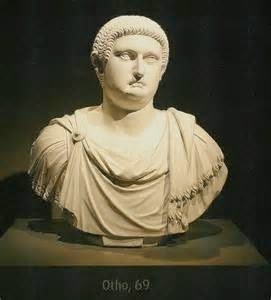
32 Emperor Otho (second emperor of the Year of the Four Emperors) was born. His reign lasted three months - January 15 - April 16, 69.

357 Emperor Constantius II, after dealing with the Franks, visited Rome before moving his army north to campaign against the Sarmatians, Suevi and the Quadi along the Danube. Constantius spent most of his reign quelling uprisings throughout the Roman Empire, succumbing to a fever in the winter of 361 at Mopsucrene (central Turkey).

442 King Edward IV of England was born. The first half of his rule was marred by the violence associated with the Wars of the Roses, but he overcame the Lancastrian challenge to this throne at Tewkesbury in 1471 to reign in peace until his sudden death.

32 Emperor Otho (second emperor of the Year of the Four Emperors) was born. His reign lasted three months - January 15 - April 16, 69.

357 Emperor Constantius II, after dealing with the Franks, visited Rome before moving his army north to campaign against the Sarmatians, Suevi and the Quadi along the Danube. Constantius spent most of his reign quelling uprisings throughout the Roman Empire, succumbing to a fever in the winter of 361 at Mopsucrene (central Turkey).

442 King Edward IV of England was born. The first half of his rule was marred by the violence associated with the Wars of the Roses, but he overcame the Lancastrian challenge to this throne at Tewkesbury in 1471 to reign in peace until his sudden death.
Published on April 28, 2015 02:00
April 27, 2015
What did people wear in Ancient Egypt?
 History Extra
History ExtraTomb of Nakht, Valley of the Nobles. © frans lemmens / Alamy
What did people wear in Ancient Egypt?If we look at the scenes on the walls of Egypt’s elite tombs, we see the tomb owner and his family wearing gleaming white garments. Men wear either kilts or full-length robes with sleeves; women often wear dresses so tight it would have been very difficult to walk.
Both men and women are seen wearing sandals, jewellery, cosmetics and wigs. Children are often shown naked, with a distinctive ponytail or ‘sidelock’ on an otherwise shaved head.
Archaeology paints a slightly different picture, however. The garments recovered from Tutankhamun’s tomb show that rich Egyptians enjoyed colourful clothing, decorated with embroidery, appliqué and beading. Garments recovered from less prestigious burials suggest many people wore the equivalent of the djellaba [a traditional long, loose-fitting unisex outer robe with full sleeves] worn in Egypt today.
Clothing was made from linen and, as fabric was extremely valuable, garments were mended, patched and handed on from wearer to wearer. Sandals were made from leather or reeds, while loincloths might be made of leather.
Dr Joyce Tyldesley is a senior lecturer in the Faculty of Life Sciences at the University of Manchester, where she writes and teaches a number of Egyptology courses.
Published on April 27, 2015 05:35
History Trivia - David I becomes King of Scots
April 27,
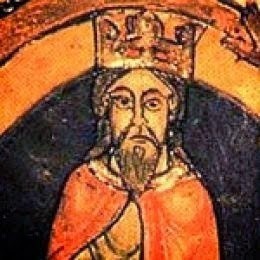
1124 David I became King of Scots.
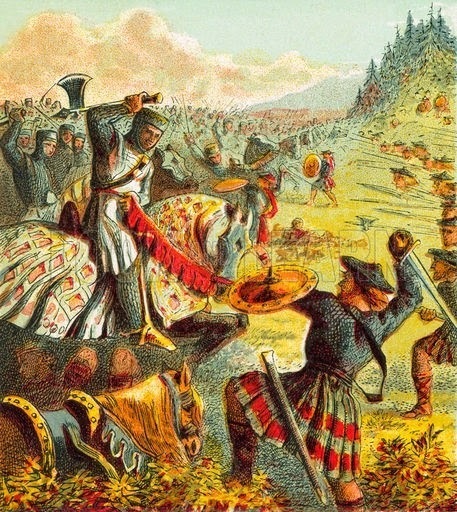
1296 Battle of Dunbar: The Scots were defeated by Edward I of England. This battle was the only significant field action in the campaign of 1296 when King Edward I of England had invaded Scotland to punish King John Balliol for his refusal to support English military action in France.

1124 David I became King of Scots.

1296 Battle of Dunbar: The Scots were defeated by Edward I of England. This battle was the only significant field action in the campaign of 1296 when King Edward I of England had invaded Scotland to punish King John Balliol for his refusal to support English military action in France.
Published on April 27, 2015 01:00



